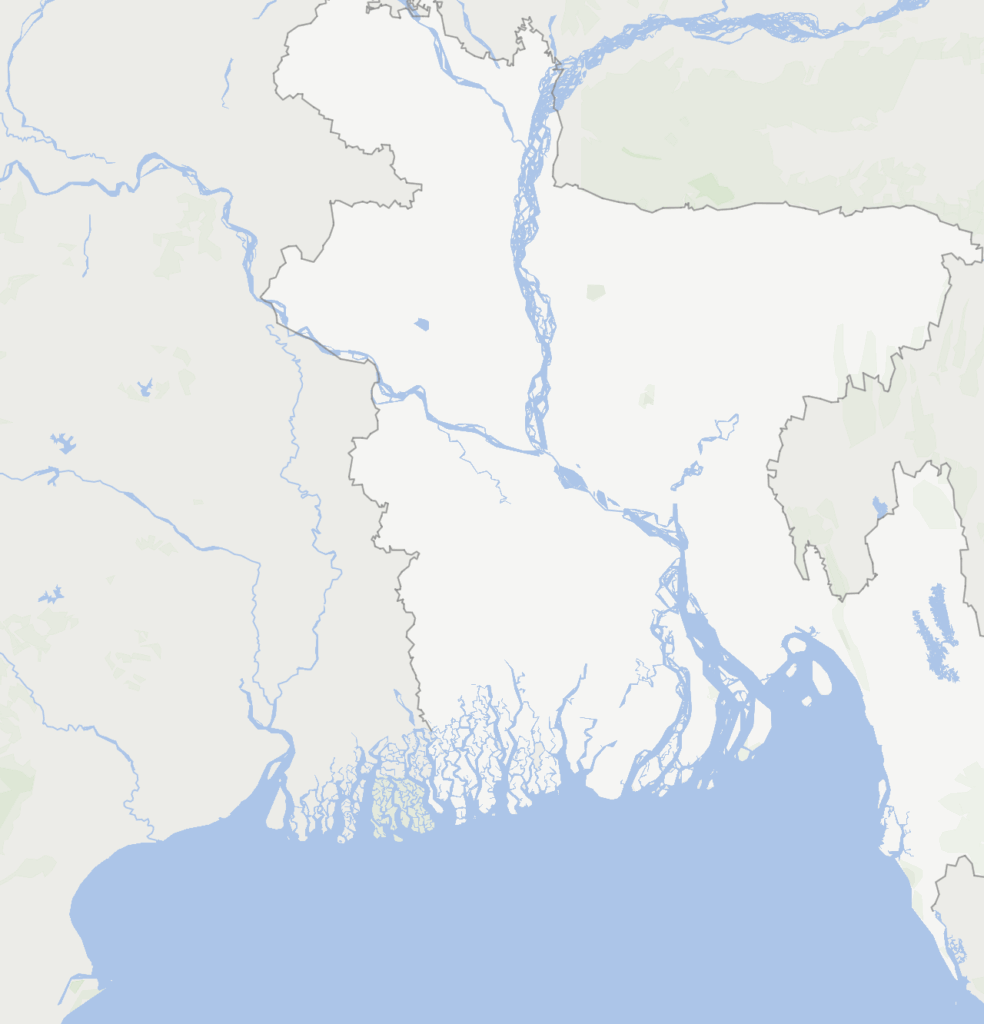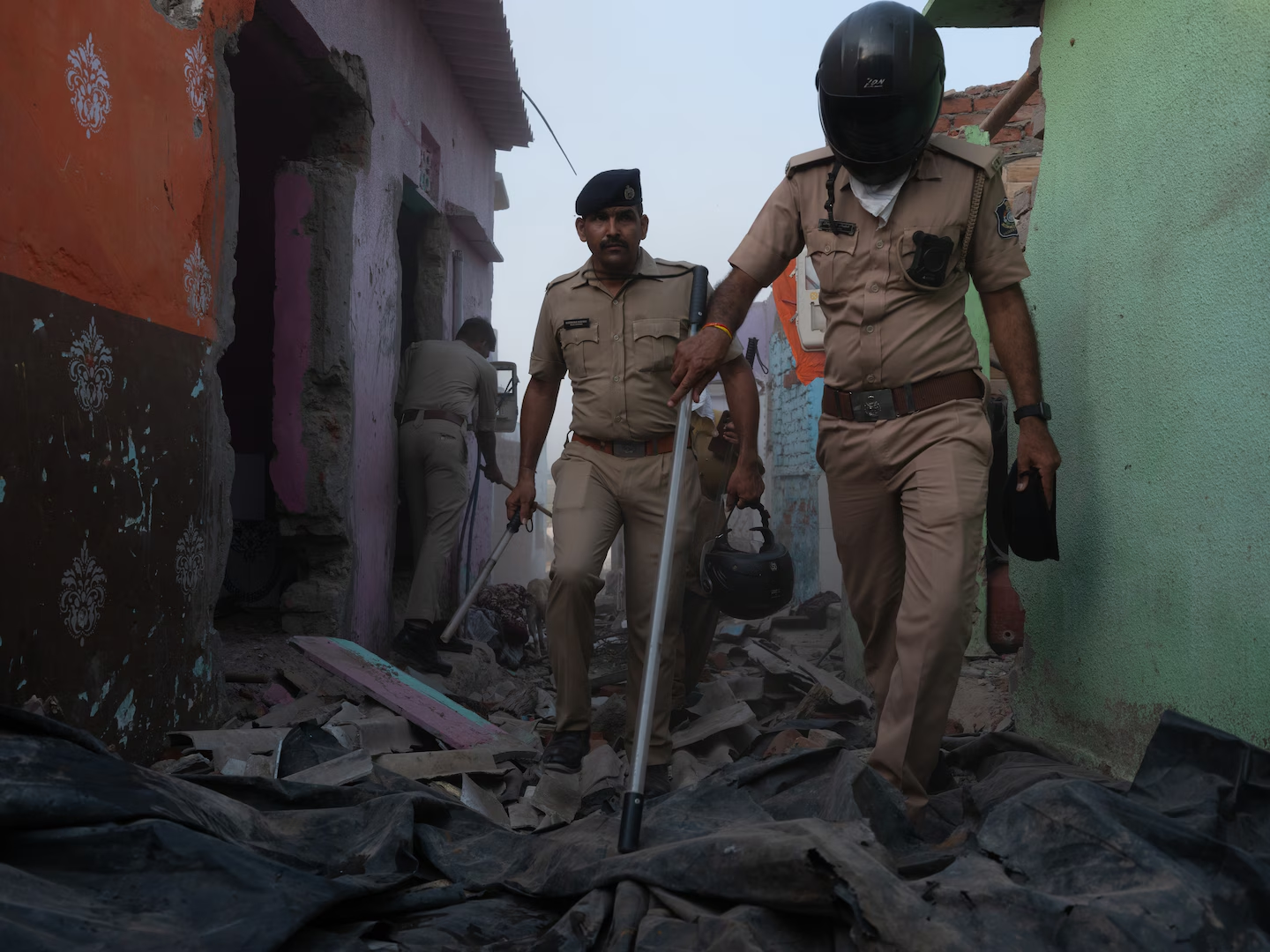BY Pranshu Verma is the incoming New Delhi bureau chief for The Washington Post.
India’s recent deportation drive targeting its Muslim minority was marked by home demolitions, arbitrary detentions, allegations of torture and a lack of due process.
Bangladesh — Indian police dragged Hasan Shah from his bed in western India one morning in late April. Later, he said, officers bound his hands with rope, placed a blindfold over his eyes and put him on a boat bound for Bangladesh.
After three days at sea, Shah said, they stood him on the edge of the vessel with a life vest, untied his hands, uncovered his eyes and gave him a final order at gunpoint: “Jump into the water,” Shah remembered the officers saying.
“If you look back, we’ll shoot you.”
Shah said he swam to dry land, where he was picked up by the Bangladeshi coast guard and taken to the city of Satkhira, in the country’s southwest,an account corroborated by the coast guard. The documents proving his Indian citizenship were snatched by police when they detained him in his hometown of Surat in India, Shah said. He is stranded now in a foreign country, effectively stateless, separated from his wife and four children who rely on his meager income as a waste picker.
“This isn’t my home,” he said near the steps of a courthouse in Satkhira. “I need to go back to India. I need to get back to my kids.”

He is one of thousands of people, most of them Muslims, who have had their lives upended by the Indian government after an April attack by militants killed 26 people in the Himalayan vacation town of Pahalgam, in Indian-administered Kashmir. As sectarian tensions swelled across India, Gujarat’s home minister, Harsh Sanghavi, pledged to root out “each and every infiltrator.”
Officials ordered raids in slums populated by Muslim laborers, branding most of those detained as illegal immigrants from Bangladesh who posed a threat to national security. While some of those targeted lacked legal status, many appeared to be Indian citizens; others were legal residents after living in the country for decades, family members said.
Shah said he was born in Gujarat, and his family hails not from Bangladesh but from the Indian state of West Bengal. Shah’s mother provided copies of two of her son’s Indian national identity cards, a voter registration document and a marriage certificate. The Washington Post verified that he is registered to vote in Indian elections. His mobile phone, which is required for the two-step authentication process to verify his identity cards, is held by police, Shah said.
The deportation drive targeting India’s Muslim minority was marked by mass home demolitions, arbitrary detentions, allegations of beatings and a lack of due process, according to interviews with Bangladeshi officials and more than 50 people swept up in the dragnet, as well as a Post review of government data, court documents and video footage.
The crackdown — led by police, cheered by local leaders and blessed by the courts — was most severe in the northeastern Assam state and the western state of Gujarat. Both are governed by politicians from the Bharatiya Janata Party, the right-wing Hindu nationalist party led by Indian Prime Minister Narendra Modi.
Between May 7 and July 3, 1,880 people were deported from India to Bangladesh, according to private Bangladeshi government data obtained by The Post. Between May 7 and June 17, 110 people were logged by border officials in Bangladesh as Indians who were wrongly deported and sent back, a separate document showed. It is unclear how many claimed Indian citizenship or residency but lacked the documentation to prove it.


Eleven people interviewed by The Post said they were detained by Indian police without being given a chance to provide proof of their legal status. Several said that their original identity documents were taken during deportation raids and that copies they subsequently provided were written off by officials as forgeries.
Video footage obtained by The Post, corroborated by witness accounts, provides a window into the treatment of deportees by Indian security forces. One shows an elderly woman left at a northern Bangladeshi border outpost begging to remain in India. She was accepted back into the country but has gone missing, according to family members.
Bangladesh has sent a series of diplomatic communications to India about its recent deportations and discussions on the matter remain ongoing, according to the Bangladesh High Commission in India.
India’s Ministry of External Affairs and Border Security Force did not respond to requests for comment.
The deportation drive “does not just violate civil rights,” said Mohsin Alam Bhat, a human rights expert and lecturer in law at Queen Mary University of London. “It clearly violates international law,” he said.
‘Keeping Muslims in line’
Since India achieved independence in 1947, the country’s Muslims have faced persecution, prejudice and discrimination, according to human rights groups. Now making up an estimated 15 percent of the population, Muslims have routinely been demonized by right-wing Hindu politicians during moments of domestic turmoil, labeled infiltrators, and subjected to mass arrests, property destruction and police brutality.
In Gujarat — a cradle of far-right Hindu nationalism where Modi began his political rise — Sanghavi, the home minister, said after the attack in Kashmir that police had been tasked with ensuring that “no illegal immigrants from any country reside in our state,” citing directions from national security meetings chaired by the prime minister.
In one late April raid in the largely Muslim shantytown of Chandola Lake in Ahmedabad, 890 people were detained, including 219 women and 214 children, according to the People’s Union for Civil Liberties (PUCL), an Indian human rights organization.
Many were made to march for hours to the police station in the sweltering heat while news crews filmed, according to videos and interviews. Most detainees were ultimately released; it’s unclear how many were deported.Sanghavi praised the police for conducting a “historic operation.”


Over the next roughly two weeks, Ahmedabad city workers bulldozed some 12,500 homes in Chandola Lake, according to municipal officials, leaving thousands of families homeless. Gujarat officials argued before the state’s high court that it was necessary to regulate areas “encroached upon by illegal immigrants” in the interest of “protecting national security,” according to a sealed court filing obtained by The Post. The high court allowed the demolitions to proceed, citing Supreme Court precedent.
Yunus Khan Pathan, a Muslim day laborer, was detained by police during the April raid and made to march until the soles of his feet burned, he said. He was eventually released from custody, but his house in Chandola Lake was bulldozed. Pathan said he was born and raised in Ahmedabad. The Post verified a copy of his national identity card.
“Prove that I’m a terrorist,” he said. “All I have is a Muslim name.”
It remains unclear how many people rounded up were in the country illegally, with activists putting the number at about 50. But few spoke out against the raid for fear of being branded “anti-nationalist,” said Mujahid Nafees, general secretary of the PUCL’s Gujarat chapter.
“The public opinion is: ‘They are keeping Muslims in line,’” he said.
Ahmedabad’s city police and Gujarat state police did not respond to requests for comment.
‘They beat me brutally’
Abdur Rahman, 20, said he was snatched from his bed in Chandola Lake at about 4 a.m. on April 26. Police showed no warrant and gave no reason, he said. During his 15 days in prison, Rahman said police whipped him repeatedly with a leather belt and forced him to say he was from Bangladesh. At first he refused, he said, but he ultimately gave in when the pain became too much.
Rahman said he was blindfolded and put on an airplane — to where he doesn’t know — and then loaded onto a ship that smelled of dirty water. For three days, he said, security forces assaulted him with steel pipes and wires. His torso, which he showed to a Post reporter, still carries dark purple marks from the journey.
“They beat me brutally,” he said. “I felt like we all were going to die.”

Rahman, like Shah, said he was given a life vest and pushed off the boat. Both recounted swimming for roughly 10 minutes before reaching a stretch of beach in the Sundarbans mangrove forests — an area that straddles eastern India and southern Bangladesh.
The men described walking toward the blinking red lights of a cellphone tower. Along the way, both came across locals who called Bangladeshi officials, and soon after, the coast guard took them to Satkhira. Now they face the daunting challenge of proving they belong in India, even though their original identity documents were destroyed by police, they said.

Rahman’s father provided a copy of his son’s national identity card and a school certificate that denoted his birthplace as Ahmedabad. The Post verified that Rahman’s identity card and school certificate were authentic.
Regardless of whether or not the deportees are citizens, the methods used by India to ship them off — without an official treaty of deportation with Bangladesh or time for due process — are a violation of international law, said Rudabeh Shahid, a nonresident senior fellow at the Atlantic Council and an expert on South Asian immigration issues. The coordinated nature of the campaign, she added, beginning with home demolitions and arrests and culminating in beatings and forced expulsions, makes one thing clear.
“You want a whole group to disappear,” Shahid said. “I have no other ways to describe this.”
‘I have only one life’
Not all deportees are taken by sea.
When India wants to push people across its land border with northern Bangladesh, authorities turn the floodlights off at night, said Lt. Col. Mehedee Imam, a battalion commander with Bangladesh’s border guard in the city of Lalmonirhat.
Under the cover of darkness, Imam said, Indian forces tell detainees to walk across the 150 yards of verdant no-man’s-land between the countries’ respective border fences. India’s border guards outnumber their Bangladeshi counterparts by a ratio of 3 to 1, Imam added, which makes it difficult to catch them in the act.
It is unlawful, Imam said, to just “abandon them in the forest,” noting that there is an established process in place for Indian and Bangladeshi forces to verify a person’s nationality.


Misma Khatun, 72, was dropped off near Imam’s border post on May 28, Imam said.
A video obtained by The Post shows her pleading with Indian forces not to leave her in Bangladesh. “I have only one life,” she said, dropping to the ground in her blue sari.
Khatun told the Indian guards she was from Assam, that she had lived there her entire life and that her identity cards were back at home.
Ultimately, Imam said, India allowed her to reenter the country the same day. But her family has heard nothing from her since. Her son, Abdul Suban, said he calls police and Indian border security every day; he has been told her whereabouts are unknown.
“I don’t even know if she is alive,” Suban said. “How does this happen?”
Qureshi reported from Ahmedabad. Supriya Kumar in New Delhi contributed to this report.
CREDIT: By Pranshu Verma, Tanbirul Miraj Ripon and Sahal Qureshi. Verma and Ripon traveled to the Bangladeshi cities of Satkhira, Lalmonirhat and Dhaka to report this story. Qureshi reported from Ahmedabad, India.
Images by : (K M Asad/ Zishaan Latif)




